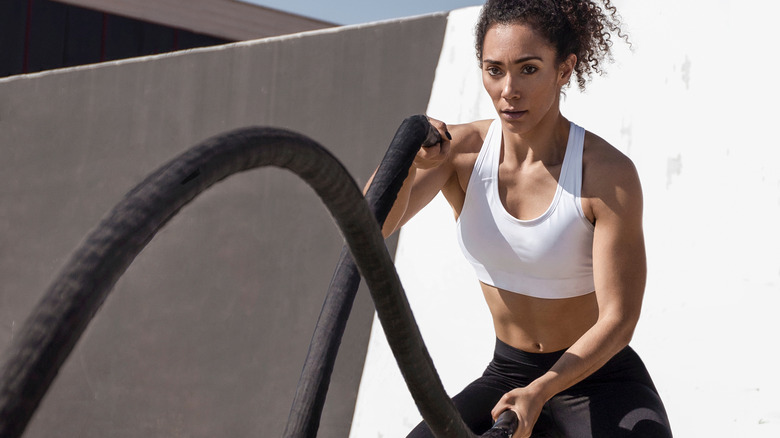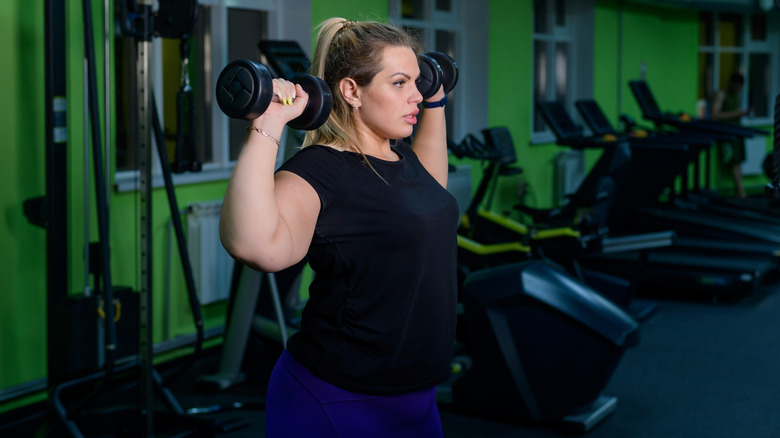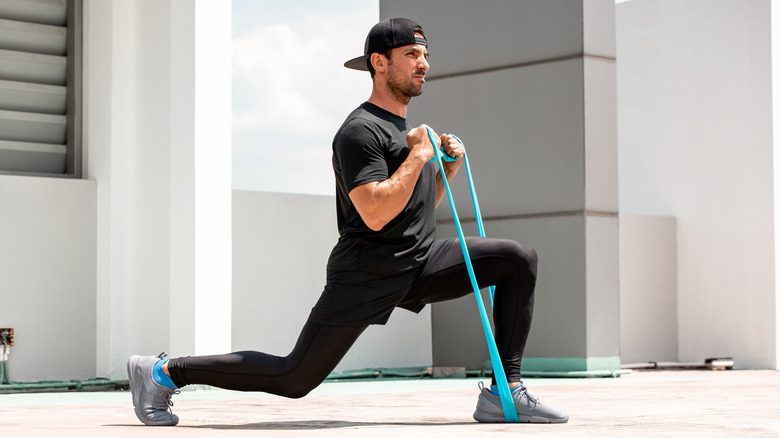Myths You Should Stop Believing About Strength Training
Strength training might be one of the best ways to get stronger and fitter. This form of exercise is associated with hypertrophy or muscle growth, but its benefits go well beyond that. For example, did you know that weight lifting can increase bone strength and prevent bone loss, according to a 2015 review published in Sports and Exercise Medicine? Over time, it may lower your risk of osteoporosis and reduce age-related muscle loss, among other perks. Plus, it can improve your balance and speed, making everyday activities easier.
Lifting weights for just 30 to 60 minutes per week may also protect against disease and increase life expectancy, suggests a 2022 review featured in the British Journal of Sports Medicine. After analyzing 16 studies, researchers concluded that strength exercises can lower the risk of death from all causes by 10-17%. At the same time, it may help prevent cardiovascular problems, diabetes, and cancer. Clinical evidence also indicates that strength training may improve blood lipids, reduce high blood pressure, alleviate back pain, and ease arthritis symptoms, according to Current Sports Medicine Reports.
Despite these benefits, there's still a lot of misinformation about strength training. You might have heard that lifting weights makes women "bulky," or that it's bad for your joints. Maybe you're afraid you'll lose your flexibility if you start lifting weights, but nothing could be further from the truth. With that in mind, here are some common strength training myths that refuse to die.
Myth: Strength training will make you bulk up
Many women mistakenly believe that strength training can lead to a bulky physique. In reality, lifting weights will help you burn fat and build lean mass, which will increase the number of calories you burn throughout the day. What this means is that you'll get leaner, stronger, and more athletic.
"Gaining muscle mass comes from a combination of heavy weight training and an excess in calories," certified strength and conditioning specialist Jacque Crockford told SHAPE. "If you perform resistance training one to three days per week and you're not eating more calories than you expend in a day, you probably won't see a ton of muscle growth," she added.
The thing is, muscle growth doesn't happen overnight. Professional bodybuilders eat large amounts of food and spend years trying to reach massive proportions. For example, bodybuilding legend Phil Heath had six meals a day in the off-season, reports Muscle & Fitness. The average person can barely make time for two or three meals per day!
Also, note that muscle is denser than body fat — and, therefore, it takes up less space, explains Everyday Health. Two people of the same height and weight can look completely different, depending on their body composition. Plus, women produce 15 to 20 times less testosterone than men, which limits their ability to build muscle mass, according to 2015 research published in Endocrine Reviews.
Myth: Weight lifting is bad for your joints
Perhaps you love strength training, but you're concerned about its impact on the joints. Lifting too much can cause wear-and-tear on the body, but most gym-goers don't train heavily enough to develop joint problems. Resistance training, including weight lifting, will actually strengthen your bones and joints as long as you use proper form.
This form of exercise may also reduce arthritis pain and improve physical function, suggests a 2020 review featured in Sports Health. What's more, it doesn't seem to affect joint health or exacerbate pain in older adults, reports an earlier study published in the Journal of the American Geriatrics Society. Lifting weights strengthens the muscles around your joints, taking some of the pressure off. At the same time, it increases bone density and may help prevent osteoporosis, says orthopedic surgeon Karen Sutton (via Creaky Joints).
In the long run, weight training can improve your balance, leading to a lower risk of falls. Plus, you may experience increased joint flexibility and range of motion (ROM), according to a recent review published in the journal Healthcare (Basel). As the researchers note, strength training might be equally effective as stretching for improving ROM. Last but not least, lifting weights can make it easier to keep the pounds off, which can further reduce the pressure on your joints, explains the Cleveland Clinic. This can translate into a lower risk of osteoarthritis and other joint disorders.
Myth: Strength exercises won't help you lose fat
A common misconception is that strength training doesn't burn fat. Both cardio and weights are effective for weight loss, but they work differently. Cardiovascular training burns more calories during exercise, but weight lifting builds muscle, leading to a faster metabolism and a higher energy expenditure at rest, notes Healthline. The University of New Mexico explains that if you gain just 4.5 pounds of muscle, you'll burn an additional 50 calories per day — that's an extra 1,500 calories per month!
Strength training also preserves fat-free mass while you're on a diet, according to a 2009 study published in the journal Obesity. What's more, you'll continue to burn calories for hours or days after finishing your workout, says Healthline. With aerobic training, you'll only burn calories during exercise.
However, both training methods have their perks — and there's no need to choose between the two. A balanced fitness plan can (and should) include different types of exercise, including aerobic and resistance training.
What you eat matters, too. You can spend hours in the gym and still gain weight if your diet is off. Weight loss requires a calorie deficit, meaning that you must take in fewer calories than you burn, explains WebMD. This can be done by eating less, exercising more, or both.
Myth: Muscle turns to fat when you stop lifting weights
One of the most common myths about strength training is that muscle turns to fat when you stop lifting. "It's absolutely not true," exercise physiologist Hahns Petty told Piedmont Healthcare. "Fat cells and muscle cells are different structures and are not interchangeable. It would be like an orange turning into an apple. It's not possible," he explained.
If you stop working out, your muscle cells will become smaller. As a result, your muscles will look less firm and tight. At the same time, you may start to gain weight — especially if your energy intake stays the same. However, your muscles cannot turn to fat.
Even if you stop lifting weights, you can still preserve lean mass through other means. For example, everyday activities like walking and cycling help build and maintain muscle, says Harvard Medical School. You may also resort to yoga, Pilates, swimming, bodyweight exercises, team sports, or using resistance bands to prevent muscle loss. Yoga, for instance, can help you build muscle and increase overall strength, among other benefits, notes Aaptiv.
Myth: Heavy lifting is the only way to get results
You've probably heard that building muscle and strength requires progressive overload. Basically, you need to gradually increase training volume, frequency, and other variables, such as the amount of weight used, to get results. This approach prevents plateaus by keeping your body from adapting to exercise, while also reducing your risk of injury, according to the National Academy of Sports Medicine (NASM). However, progressive overload isn't limited to heavy lifting. You can simply change the number of reps and sets, or take shorter breaks between sets, suggests Bodybuilding.com.
For example, you can experiment with drop sets, pyramid sets, or partial reps, recommends NASM. Drop sets, for instance, involve a gradual reduction in the amount of weight used, such as four to six reps with 20 pounds, followed by a second set of reps with 18 pounds, and a third set with 15 pounds, with no rest between sets, explains Muscle & Fitness.
Another option is to swap free weights for gym machines or the other way around. You can also incorporate resistance bands, kettlebells, battle ropes, and other accessories into your workouts. If, say, you normally perform dumbbell lateral raises, use resistance bands instead. What matters most is to keep your muscles guessing by changing things up. Last but not least, remember to have fun and leave your comfort zone!






